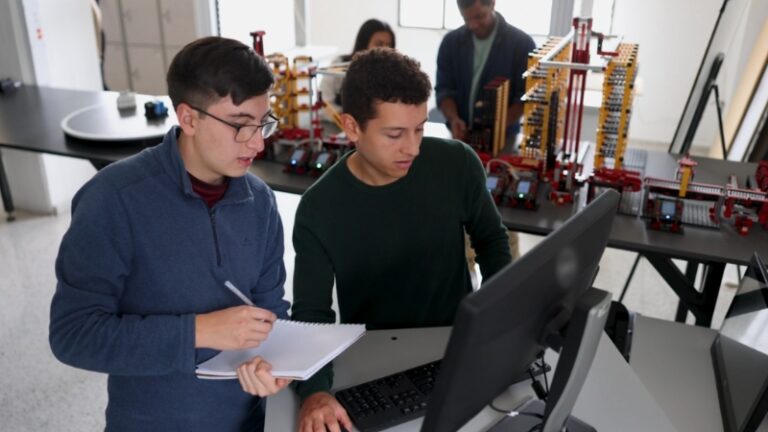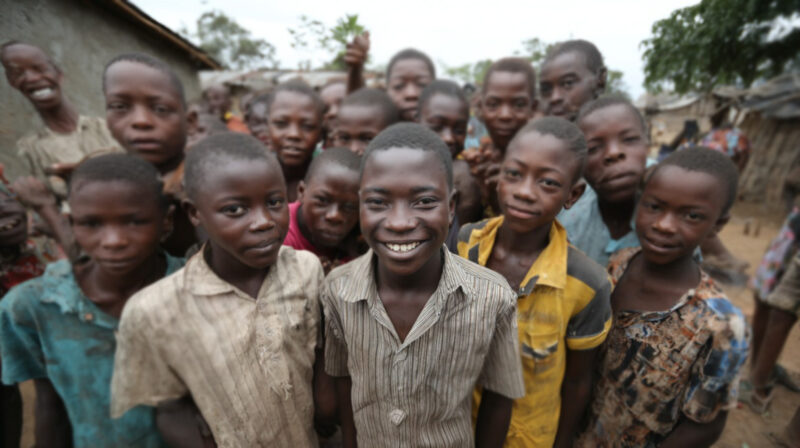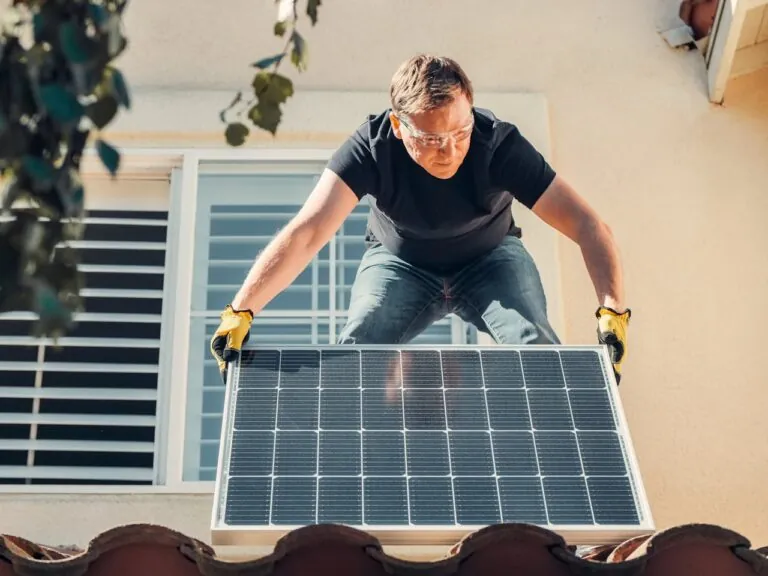Over 600 million people in Africa live without access to electricity. The gap between urban and rural areas continues to grow as rural communities face severe limitations in healthcare and education.
Without reliable energy, basic services fail to function, leaving millions behind. Solar energy and other decentralized renewable solutions offer real opportunities to change that.
With proper implementation, communities can unlock access to modern services that support wellbeing and learning.
Expanding Access Through Solar Electrification
A sustainable energy shift is reshaping rural Africa, and at the center of that progress is solar electrification.
Centralized and decentralized solar power options have opened the door for entire regions and isolated villages to access reliable electricity for the first time.
With tailored solutions suited to local contexts, both large-scale and community-led solar initiatives drive immediate improvements across sectors.
To understand how access is expanding, consider the distinct roles played by utility-scale solar plants and off-grid solutions.
- Integration of solar farms into regional grids for broader coverage
- Deployment of mini-grids and solar home systems for remote households
- Use of battery storage to ensure a constant supply
- Real-world projects that serve health centers, schools, and small businesses
Utility-Scale Solar Farms
Garissa Solar Plant in Kenya and Bokamoso Solar Plant in South Africa reflect large-scale ambition backed by regional coordination.
Clinics and schools within these grid zones benefit from reduced outages, making continuous service delivery possible.
Expanded grid capacity enables future infrastructure development without immediate need for diesel backup.
Community and Off-Grid Solutions
Mini-grids, solar home kits, and battery storage now meet the needs of households and facilities located far from any grid connection.
In Togo, the PRAVOST Project electrified 314 health centers. These community-level systems create dependable power networks that do not depend on government utilities.
- Local control over installation and maintenance
- Shorter deployment timelines
- Improved resilience during grid outages
- Scalable architecture tailored to village size and demand
Reliable solar systems turn isolated locations into hubs of productivity and health service access, with ripple effects across the region.
Transforming Healthcare Systems
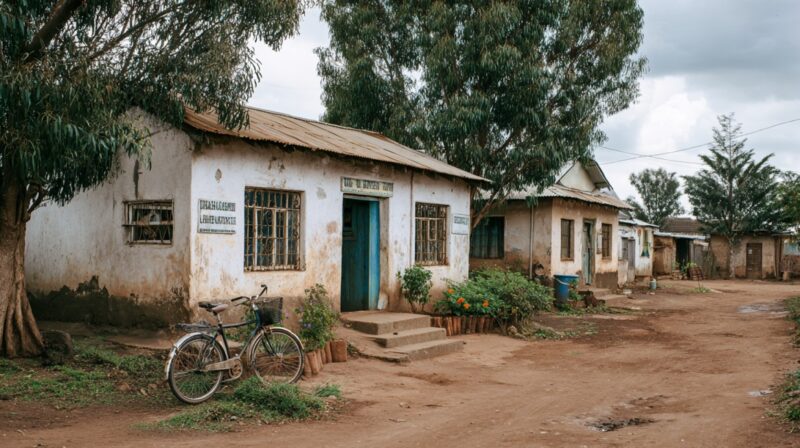
Rural clinics and health centers in Africa suffer when lights fail, refrigerators break down, and emergency responses are delayed.
With electrification, these facilities operate longer hours, store vaccines safely, and perform critical procedures without interruption.
- Consistent power for life-saving equipment
- Reduced maternal and infant mortality
- Access to clean water through solar heating
- Improved morale and retention among medical professionals
Improved Clinical Infrastructure
Without dependable lighting, surgeries and nighttime care remain dangerous. Now, with solar power, health centers operate after sunset with well-lit wards and functional operating rooms.
Equipment such as autoclaves, oxygen concentrators, and diagnostic machines run without risk of failure.
Batonou Health Center in Togo exemplifies how renewable power transforms a rural clinic. Since installation, staff report fewer treatment delays, better sterilization practices, and higher patient confidence in facility services.
Just as modern clinics like Tannlegeteam in Oslo rely on stable power to provide precise, comfortable dental care, rural health centers in Africa require consistent electricity to offer even the most basic medical services.
Emergency Services and Maternal Health
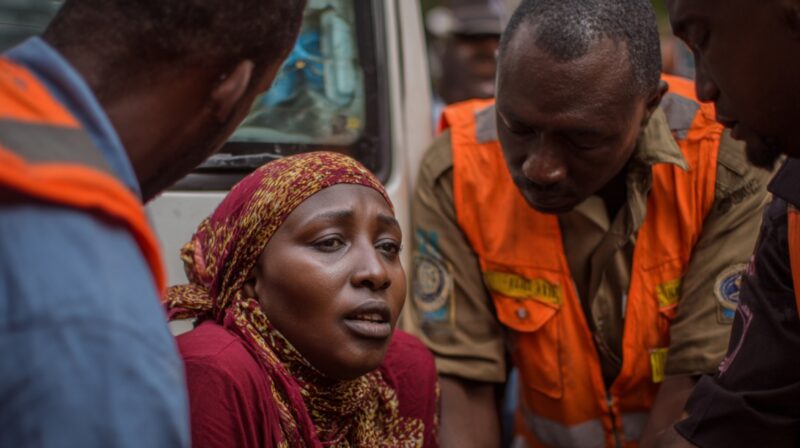
Stable electricity allows timely interventions during emergencies.
Obstetric care, in particular, benefits as lights and monitoring equipment that function during nighttime deliveries.
Ambulances powered or recharged via solar hubs reach patients quicker.
Medical staff note improved diagnostic capability, thanks to powered lab tools and ultrasound machines. As complications are caught earlier, patient survival rates rise.
- Safer deliveries with lighting and powered monitors
- Quicker emergency triage and care
- Functional refrigerators for blood and medication storage
- Reduced fatalities linked to blackouts
Clean Water Access
Clean water is vital for hygiene and treatment. In 122 rural health facilities in Togo, solar water heaters now provide warm water for cleaning wounds, surgical prep, and sanitation.
The upgrade drastically cuts infection rates, particularly for maternity and pediatric care.
Daily tasks like handwashing, equipment cleaning, and laundry no longer depend on firewood or unreliable diesel heaters.
Staff focus more on patient care and less on resource improvisation.
Enhancing Educational Outcomes

Without electricity, education falters. Children study under candlelight, schools cancel lessons when daylight fades, and teachers avoid rural placements.
Solar electrification flips the equation, suddenly, classrooms light up, digital tools become accessible, and teacher housing feels livable.
Positive changes in the education sector are substantial.
- Access to lighting for after-dark study
- E-learning through powered devices and the internet
- Improved infrastructure that retains quality educators
Lighting for Learning
In Uganda’s Kyenjojo District, the solar lighting initiative now powers homes and community centers.
Students who previously struggled with kerosene fumes or total darkness now have extra hours for homework.
School attendance improves when children wake up in clean, well-lit environments and prepare in comfort.
Guardians also benefit; parents assist with studies or complete chores in safer, brighter settings.
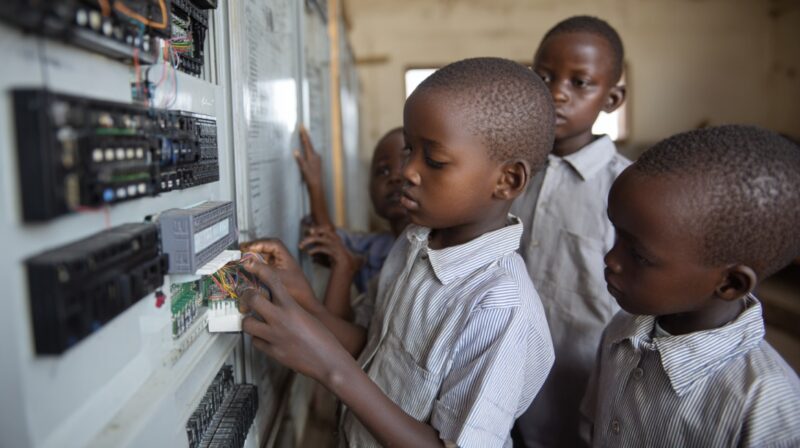
Digital Education Access
Electricity fuels digital learning. Classrooms with computers, projectors, routers, and tablets provide modern instruction.
Access to online lessons, interactive content, and recorded lectures reduces the rural-urban education divide.
Teachers now incorporate videos, virtual labs, and simulations into daily lessons. Students gain exposure to digital skills that are essential for employment.
Teacher Retention and Facility Improvement
Teachers seek schools with proper amenities. Reliable energy powers lighting, fans, and appliances in staff accommodations.
Retention rates rise as educators find it easier to live and work in rural areas.
Schools become centers of excellence when power supports libraries, labs, and administration.
Long-term improvements follow once teachers stay, mentor others, and build student success over years, not months.
Driving Economic Inclusion Through Energy and Mobility
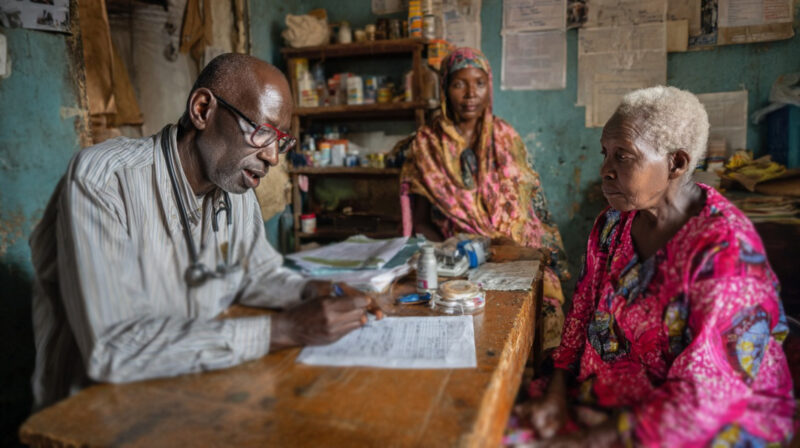
Electricity reaches far beyond homes and clinics, it drives local economies, boosts food production, and opens income opportunities.
With access to energy, rural communities step into new economic roles. Agriculture becomes more productive, small businesses extend operating hours, and new professions emerge in clean technology and mobility.
Women and youth, often left out of traditional sectors, take on leading roles in this new economy.
- Increased crop yields through solar-powered irrigation
- Expanded market activities with longer business hours
- Job creation in clean energy and electric mobility services
Agricultural Innovation
Food security begins with water. In places like Bas-Mono, Togo, solar-powered irrigation helps farmers water crops year-round.
No longer restricted by rainfall, farmers now grow vegetables and grains across multiple seasons.
Solar pumps draw water from wells or rivers efficiently, slashing manual labor and fuel costs.
As crops grow consistently, incomes rise, and families invest in education and health.
Farming becomes less vulnerable to climate shifts, and communities feed themselves with greater stability.
- Higher crop output and reduced seasonal losses
- Improved nutritional availability in local diets
- Less reliance on diesel or manual water hauling
- Time savings for women and children previously tasked with watering
Small Business Growth
Shops stay open longer with reliable lighting. Vendors use refrigerators to store perishable goods, eliminating waste.
Tailors and metalworkers operate electric tools. Barbershops, internet cafés, and food stalls flourish as consistent power reduces downtime.
Increased productivity fuels demand. Households invest in appliances and services. Markets expand, and trade routes lengthen as solar-powered transportation gains ground.
- More revenue through extended operating hours
- Reduced spoilage in food-based enterprises
- Support for digital and remote services such as printing or mobile top-up
- Attraction of investment due to predictable energy costs
Youth and Women’s Empowerment
Energy access creates new roles in solar system installation, maintenance, sales, and EV repair.
Women now lead micro-enterprises focused on clean cooking, battery leasing, or mobile delivery.
Young people enter fields once limited to urban areas, bringing innovation back to villages.
Training programs and startup support help locals become service providers instead of passive consumers. With access to tools and mobility, rural entrepreneurs grow their influence and income.
- Women managing solar charging kiosks or water stations
- Youth launching courier services with e-bikes or solar trikes
- Technicians earning income through the repair of solar and battery systems
- Entire households contributing to income generation
The Synergy of Clean Energy and Mobility
View this post on Instagram
Energy and mobility now work in tandem to unlock new potential in rural Africa.
Electric vehicles (EVs) powered by solar charging hubs link farmers, health workers, and students to essential services and markets.
Together, sustainable synergy, clean power and transport reduce isolation, boost economic activity, and improve emergency response.
- EV deployment for rural access and last-mile delivery
- Multipurpose solar charging hubs that serve communities
- Flexible financial models making clean mobility affordable
Electric Vehicles in Rural Areas
Electric motorcycles and scooters are transforming connectivity. In Kenya, Ampersand supplies EVs to delivery workers and farmers.
In Nigeria, MAX enables drivers to access reliable vehicles that cut travel costs.
Patients reach clinics faster. Goods arrive fresh to markets.
Women operate transport services in places where fuel-based vehicles were scarce or unaffordable.
- Reduced transport time to health centers and markets
- Lower running costs compared to petrol-powered vehicles
- Fewer emissions and quieter operation in village settings
- Greater independence and income for EV owners and drivers
Solar Charging Hubs
EVs need places to recharge. Solar-powered hubs now serve multiple functions:
- Vehicle charging
- Phone charging
- Refrigeration
- Workspace lighting
These hubs often double as centers of economic and social activity.
Local entrepreneurs manage charging stations, offering services, and generating income. Communities benefit from central access to energy without depending on an inconsistent grid supply.
- Consistent power for shared business equipment
- Centralized location for communication and transport access
- Reduced environmental impact and fuel costs
- A model of local ownership and sustainability
Pay-as-You-Go and Leasing Models
Affordability is crucial for adoption. Pay-as-you-go and leasing options help rural users access EVs, batteries, and solar kits with minimal upfront cost.
Vendors track usage through mobile apps, and users pay via mobile money.
Once payments are complete, users own the equipment outright. Flexibility encourages investment by low-income families and microenterprises.
- Low initial investment for energy and transport access
- Predictable monthly costs with optional ownership
- Increased reach for solar and EV companies
- Inclusion of underserved populations in green growth
The Bottom Line
Reliable power forms the base for improved healthcare and education in rural Africa.
When electricity reaches communities, doctors can save lives, and children can learn in safe, well-lit environments.
Moving forward, investment, collaboration, and community ownership must remain at the heart of Africa’s energy and development story.



